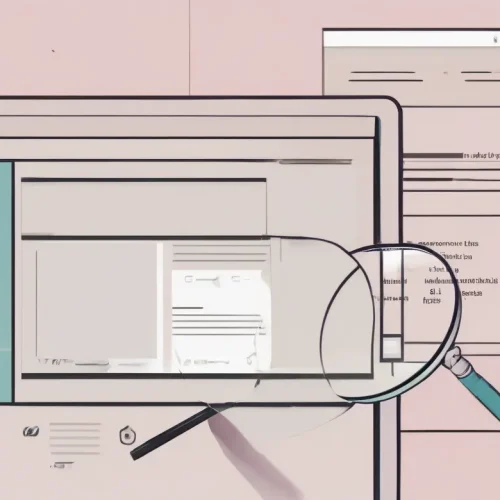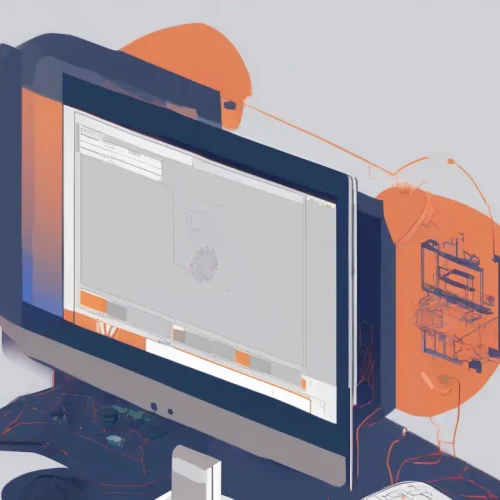The Strategic Website Design Process: A Comprehensive Guide
In today’s digital marketplace, a website is far more than an online brochure; it is a critical business asset, a primary sales tool, and the central hub of your brand’s identity. Embarking on the journey of creating a new site requires a strategic and comprehensive website design process. Before you even think about contacting a web design company, it’s essential to lay a strong foundation to ensure the final product aligns with your business objectives, engages your target audience, and delivers a measurable return on investment. This guide will walk you through every critical phase, from initial strategy to post-launch maintenance, transforming an overwhelming task into a manageable and successful project.
Phase 1: Strategy and Planning – The Blueprint for Success
The most common mistake businesses make is jumping directly into visual design without a clear strategy. The planning phase is the most critical part of the entire website design process, as it defines the ‘why’ behind your website and sets the direction for every subsequent decision.
Define Your Website’s Purpose and Goals
First, you must answer a fundamental question: What is the primary purpose of this website? Is it to generate leads, sell products directly, establish industry authority, or provide customer support? Vague goals lead to vague results. Instead, implement the SMART framework to set clear, actionable objectives:
- Specific: Clearly state what you want to achieve. Instead of “increase sales,” aim for “increase online sales of Product X by 20%.”
- Measurable: Define the Key Performance Indicators (KPIs) you will use to track success. This could be conversion rate, number of qualified leads, or average session duration.
- Achievable: Set realistic goals based on your resources and market position.
- Relevant: Ensure your website goals align with your broader business objectives.
- Time-bound: Set a specific timeframe for achieving your goals, such as “within the next six months.”
Common website goals include increasing organic traffic by 30% in Q4, generating 100 marketing-qualified leads per month, or reducing the cart abandonment rate to under 50%.
Identify Your Target Audience and Competitors
You are not designing the website for yourself; you are designing it for your customers. Developing detailed user personas—semi-fictional representations of your ideal customers—is crucial. Consider their demographics, goals, pain points, and online behavior. Understanding your audience will inform everything from the visual design and tone of voice to the site’s navigation and functionality.
Simultaneously, conduct a thorough competitive analysis. Examine the websites of your direct and indirect competitors. Identify what they do well, where they fall short, and what features or content are standard in your industry. This analysis will reveal opportunities for you to differentiate your brand and provide a superior user experience.
Determine Your Budget and Scope
Your budget will significantly influence the scope and complexity of your project. Be realistic about what you can achieve. A website is an investment, not just an expense. Generally, a website project can be categorized by complexity:
- Basic Informational/Corporate Websites: Typically 5-15 pages, focusing on brand messaging and lead generation through contact forms.
- E-commerce Websites: Involve product catalogs, secure payment gateways, inventory management, and customer accounts. These are more complex and costly.
- Custom Web Applications: Highly specialized sites with unique functionality, such as client portals, interactive tools, or large-scale databases.
Your choice of platform, such as WordPress, Shopify, or a custom-coded solution, will also impact the cost. WordPress is often a cost-effective and scalable choice for many businesses, offering immense flexibility and a user-friendly management system.
Phase 2: Design and Content – Bringing Your Vision to Life
With a solid strategy in place, you can move on to the creative stages of the website design process. This phase is about translating your goals and audience insights into a tangible visual and content framework.
Structuring Your Site: Sitemap and Information Architecture
Information Architecture (IA) is the practice of organizing and structuring the content on your website in a logical, intuitive way. A well-planned IA ensures that users can easily find what they are looking for. The primary output of this step is a sitemap—a hierarchical diagram of all the pages on your website. This map helps all stakeholders visualize the site’s structure and ensures no critical pages are overlooked.
Wireframing and Prototyping: The Visual Framework
Before any graphic design begins, wireframes are created. These are low-fidelity, black-and-white blueprints that outline the basic structure of each key page. Wireframes focus purely on layout, element placement, and user flow, without the distraction of colors, fonts, or images. This step allows you to refine the user experience (UX) early in the process.
Once the wireframes are approved, high-fidelity mockups or prototypes are developed. These are static visual representations of what the final website will look like, incorporating your brand’s color palette, typography, imagery, and overall aesthetic. This is where the User Interface (UI) design comes to life, focusing on creating an engaging and visually appealing experience.
Content Strategy: The Voice of Your Brand
Content and design are two sides of the same coin; they must be developed in tandem. A beautiful website with weak content will not convert. Your content strategy should outline the creation of compelling, SEO-optimized copy, high-quality images, and engaging videos. Every piece of content should serve a purpose, guiding users through their journey and persuading them to take your desired action. Waiting until the end of the project to write content is a recipe for delays and a disjointed final product.
Phase 3: Development and Testing – Building a Robust Foundation
This is the technical phase where the approved designs are transformed into a fully functional website. Careful planning and execution here are vital for performance, security, and scalability.
Choosing Your Development Partner: Agency vs. Freelancer
One of the most crucial decisions in the website design process is selecting who will build your site. You generally have two options: a web design agency or a freelance developer.
- Web Design Agency: An agency offers a team of specialists (designers, developers, project managers, SEO experts) under one roof. This is ideal for complex, ongoing projects where accountability, a structured process, and a broad range of skills are required. They provide consistency and can scale efforts as needed.
- Freelancer: A freelancer can be a great choice for smaller, well-defined projects with a limited budget. You get direct communication and often more flexibility. However, you are responsible for vetting their skills, managing the project, and ensuring they can handle all aspects of the job.
When vetting a potential partner, review their portfolio, check client testimonials, and ask about their specific process. Ensure they have a consistent team and are not simply outsourcing the work to a random third party.
The Development Process: From Code to Reality
During this stage, developers write the code that brings your website to life. This involves:
- Front-End Development: Building the client-side of the website—everything the user sees and interacts with in their browser. This is done using languages like HTML, CSS, and JavaScript.
- Back-End Development: Building the server-side of the website, which includes the database and the content management system (CMS) that powers the site. This is where the site’s logic and functionality are handled.
Throughout this process, the site should be built with responsiveness in mind, ensuring it looks and functions perfectly on desktops, tablets, and mobile devices.
Rigorous Testing: Ensuring a Flawless Launch
Before the website goes live, it must undergo comprehensive testing to identify and fix any bugs or issues. This is a non-negotiable step in any professional website design process. Testing should cover:
- Functionality: Are all links, forms, and interactive elements working correctly?
- Compatibility: Does the site display correctly across all major web browsers (Chrome, Firefox, Safari, Edge)?
- Performance: How fast does the site load? Testing for Core Web Vitals (LCP, INP, CLS) is essential for both user experience and SEO.
- Usability: Is the website easy and intuitive to navigate?
Phase 4: Launch and Beyond – The Journey Doesn’t End Here
Launching the website is not the end of the project; it’s the beginning of its life online. A post-launch strategy is critical for long-term success.
The Go-Live Checklist
A smooth deployment requires a final checklist. This includes tasks like setting up hosting, pointing the domain name to the new server, installing an SSL certificate for security, and performing one last full site backup. Once live, double-check that the site loads correctly on the live URL and that all analytics and tracking tools (like Google Analytics and Google Search Console) are properly configured.
Post-Launch Strategy: Driving Traffic and Engagement
Your new website won’t attract visitors on its own. You need a promotion plan. Announce the launch to your email list and on social media. Submit your new sitemap to search engines via Google Search Console to encourage faster indexing. Begin executing your ongoing SEO and content marketing strategy to build organic traffic over time.
Ongoing Website Maintenance: Protecting Your Investment
A website is like a car; it requires regular maintenance to perform optimally and remain secure. An ongoing maintenance plan is a critical final step in the website design process. Key tasks include:
- Weekly: Check for and apply updates to your CMS, theme, and plugins. Run security scans and verify that your automated backups are working.
- Monthly: Review your site’s performance and analytics to identify any issues or opportunities. Test your forms and checkout process to ensure they are functioning smoothly.
- Quarterly: Conduct a review of your SEO performance. Refresh key pages with new content and check for any broken links.
- Annually: Perform a full website audit, reviewing design, content, and functionality to ensure it still aligns with your business goals.
Conclusion: A Strategic Process for Lasting Success
Ultimately, a successful website is the product of a deliberate and strategic website design process. By investing time in planning, clearly defining your goals, understanding your audience, and choosing the right partner, you build more than just a collection of web pages—you create a powerful engine for business growth. Remember that your website is a living entity that requires ongoing attention and optimization. By embracing the entire lifecycle, from strategy to long-term maintenance, you ensure your digital presence remains a valuable and effective asset for years to come.






